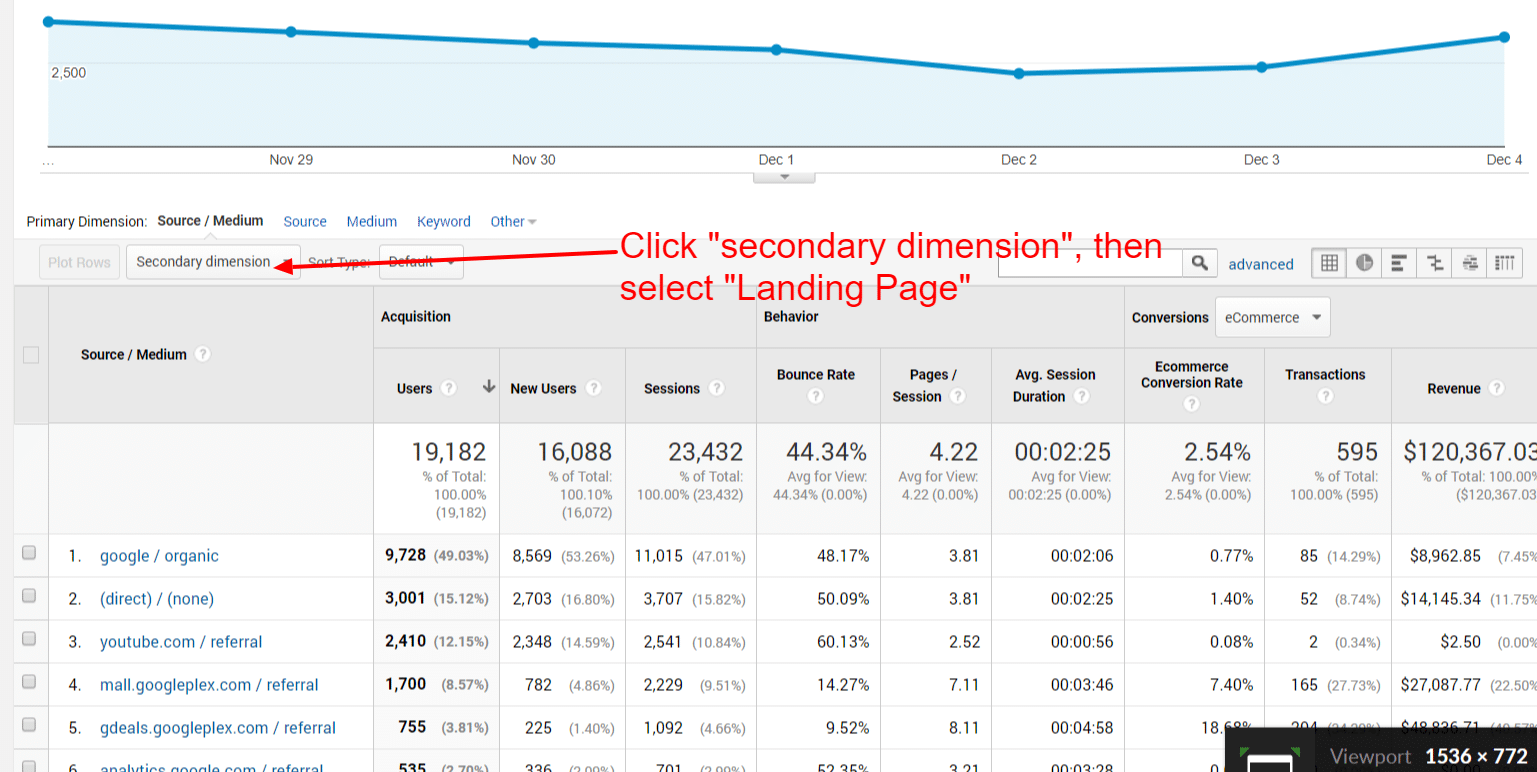Unlock Deeper Insights With Second Dimension in Google Analytics
With the substantial expanse of information offered in Google Analytics, the application of additional dimensions can significantly enrich your logical abilities. By purposefully incorporating secondary measurements right into your analysis, you can uncover valuable understandings that might otherwise continue to be obscure - Secondary Dimension in Google Analytics.
Recognizing Key Vs. Additional Dimensions
When examining data in Google Analytics, it is essential to compare second and main measurements to gain deeper insights into customer habits. Main dimensions are the major classifications whereby you can watch your information, such as source/medium, touchdown, or gadget page. These dimensions offer the fundamental framework for organizing and recognizing your data. On the various other hand, secondary measurements permit you to further dissect your primary measurement data. By adding an additional dimension, you can layer on added details to your key dimension, enabling an extra granular evaluation. If your primary measurement is the source/medium through which customers showed up on your site, adding a secondary measurement like geographical location can reveal where those individuals are situated geographically. This added layer of details can aid you identify patterns, patterns, or anomalies that may not have been apparent when looking at the primary measurement alone. Leveraging both second and key measurements in Google Analytics is critical for extensive data analysis and notified decision-making.
Making Use Of Second Dimensions Efficiently
Successfully utilizing additional dimensions in Google Analytics improves the deepness and granularity of data analysis, giving useful understandings right into individual habits and fads. By incorporating second measurements along with primary dimensions, experts and marketers can dive deeper right into the specifics of customer interactions on their websites. Second dimensions allow customers to section and filter primary dimension information additionally, supplying a much more thorough sight of individual demographics, interactions, and actions. This can be especially beneficial when trying to recognize the impact of certain variables on individual interaction, such as the tools or internet browsers they are making use of, the resources of their web traffic, or their geographic areas.
Additionally, secondary dimensions allow customers to compare and contrast various information factors within a single report, helping with an extra comprehensive analysis of customer habits patterns. By leveraging secondary measurements successfully, organizations can reveal hidden insights, optimize their advertising and marketing methods, and enhance the general individual experience on their websites.
Checking Out Usual Secondary Dimension Combinations
To additionally examine individual behavior and fads in Google Analytics, it is beneficial to check out common mixes of second dimensions. Some typical secondary measurement combinations that supply valuable insights include examining traffic resources with user places to comprehend where site site visitors are coming from geographically and how they found the website. Analyzing user habits metrics with additional dimensions such as interests or demographics can assist in targeting specific audience segments extra successfully.
Using Second Measurement in Personalized Reports
Utilizing secondary measurements in custom-made reports enables for an extra extensive analysis of data in Google Analytics, browse around this web-site boosting the deepness of understandings gotten. When developing customized reports in Google Analytics, incorporating second measurements can provide a more in-depth sight of how different measurements communicate with each various other. This feature makes it possible for individuals to delve deeper right into their data and reveal important connections that may not be right away apparent.
By applying second dimensions in custom reports, users can gain a much better understanding of their website or app website traffic. For instance, combining the key measurement of "source/medium" with the additional measurement of "landing web page" can expose which touchdown web pages are executing best for web traffic originating from specific resources. This insight can assist marketing professionals enhance their campaigns and enhance total conversion prices.

Enhancing Information Visualization With Second Dimension
When exploring information in Google Analytics custom records, including secondary dimensions not just supplies a more detailed evaluation but additionally boosts the aesthetic representation of understandings through data visualization. By adding a secondary measurement to your reports, you can enrich the method data exists, making it much easier to determine patterns, trends, and correlations within your site's performance metrics.
Secondary measurements can aid you sector your information further, permitting a go to these guys much deeper understanding of individual behavior and interactions on your website. This enhanced degree of granularity can be specifically valuable when trying to isolate certain variables that may impact your website's performance - Secondary Dimension in Google Analytics.

Verdict
To conclude, leveraging additional measurements in Google Analytics allows for a more extensive evaluation of information, causing much deeper understandings and even more enlightened decision-making. Secondary Dimension in Google Analytics. By adding extra layers of information to primary information collections, analysts and marketing experts can discover surprise patterns, patterns, and connections that offer a granular sight of user actions and interactions. This improved level of understanding allows optimization of campaigns and customized approaches for specific target market sectors, inevitably enhancing performance and conversion prices
On the other hand, second dimensions enable you to further explore your key measurement information. By including a secondary dimension, you can layer on added details to your main dimension, allowing an extra granular analysis. If your main dimension is the source/medium through which individuals got here on your website, adding an additional dimension like geographical area can expose where those individuals are located geographically. By incorporating secondary measurements along with primary measurements, analysts and marketers can dive much deeper into the specifics of individual communications on their internet sites. Additional measurements permit users to section and filter key measurement information even more, supplying a more comprehensive view of customer demographics, communications, and behaviors.